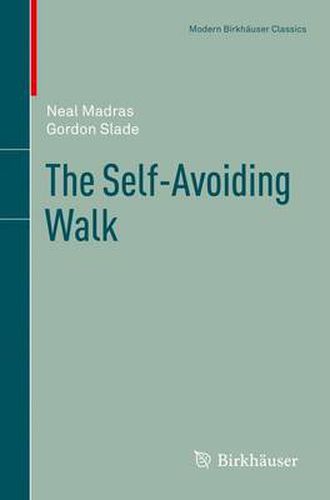Readings Newsletter
Become a Readings Member to make your shopping experience even easier.
Sign in or sign up for free!
You’re not far away from qualifying for FREE standard shipping within Australia
You’ve qualified for FREE standard shipping within Australia
The cart is loading…






This title is printed to order. This book may have been self-published. If so, we cannot guarantee the quality of the content. In the main most books will have gone through the editing process however some may not. We therefore suggest that you be aware of this before ordering this book. If in doubt check either the author or publisher’s details as we are unable to accept any returns unless they are faulty. Please contact us if you have any questions.
The self-avoiding walk is a mathematical model that has important applications in statistical mechanics and polymer science. In spite of its simple definition-a path on a lattice that does not visit the same site more than once-it is difficult to analyze mathematically. The Self-Avoiding Walk provides the first unified account of the known rigorous results for the self-avoiding walk, with particular emphasis on its critical behavior. Its goals are to give an account of the current mathematical understanding of the model, to indicate some of the applications of the concept in physics and in chemistry, and to give an introduction to some of the nonrigorous methods used in those fields.
Topics covered in the book include: the lace expansion and its application to the self-avoiding walk in more than four dimensions where most issues are now resolved; an introduction to the nonrigorous scaling theory; classical work of Hammersley and others; a new exposition of Kesten’s pattern theorem and its consequences; a discussion of the decay of the two-point function and its relation to probabilistic renewal theory; analysis of Monte Carlo methods that have been used to study the self-avoiding walk; the role of the self-avoiding walk in physical and chemical applications. Methods from combinatorics, probability theory, analysis, and mathematical physics play important roles. The book is highly accessible to both professionals and graduate students in mathematics, physics, and chemistry.
$9.00 standard shipping within Australia
FREE standard shipping within Australia for orders over $100.00
Express & International shipping calculated at checkout
This title is printed to order. This book may have been self-published. If so, we cannot guarantee the quality of the content. In the main most books will have gone through the editing process however some may not. We therefore suggest that you be aware of this before ordering this book. If in doubt check either the author or publisher’s details as we are unable to accept any returns unless they are faulty. Please contact us if you have any questions.
The self-avoiding walk is a mathematical model that has important applications in statistical mechanics and polymer science. In spite of its simple definition-a path on a lattice that does not visit the same site more than once-it is difficult to analyze mathematically. The Self-Avoiding Walk provides the first unified account of the known rigorous results for the self-avoiding walk, with particular emphasis on its critical behavior. Its goals are to give an account of the current mathematical understanding of the model, to indicate some of the applications of the concept in physics and in chemistry, and to give an introduction to some of the nonrigorous methods used in those fields.
Topics covered in the book include: the lace expansion and its application to the self-avoiding walk in more than four dimensions where most issues are now resolved; an introduction to the nonrigorous scaling theory; classical work of Hammersley and others; a new exposition of Kesten’s pattern theorem and its consequences; a discussion of the decay of the two-point function and its relation to probabilistic renewal theory; analysis of Monte Carlo methods that have been used to study the self-avoiding walk; the role of the self-avoiding walk in physical and chemical applications. Methods from combinatorics, probability theory, analysis, and mathematical physics play important roles. The book is highly accessible to both professionals and graduate students in mathematics, physics, and chemistry.